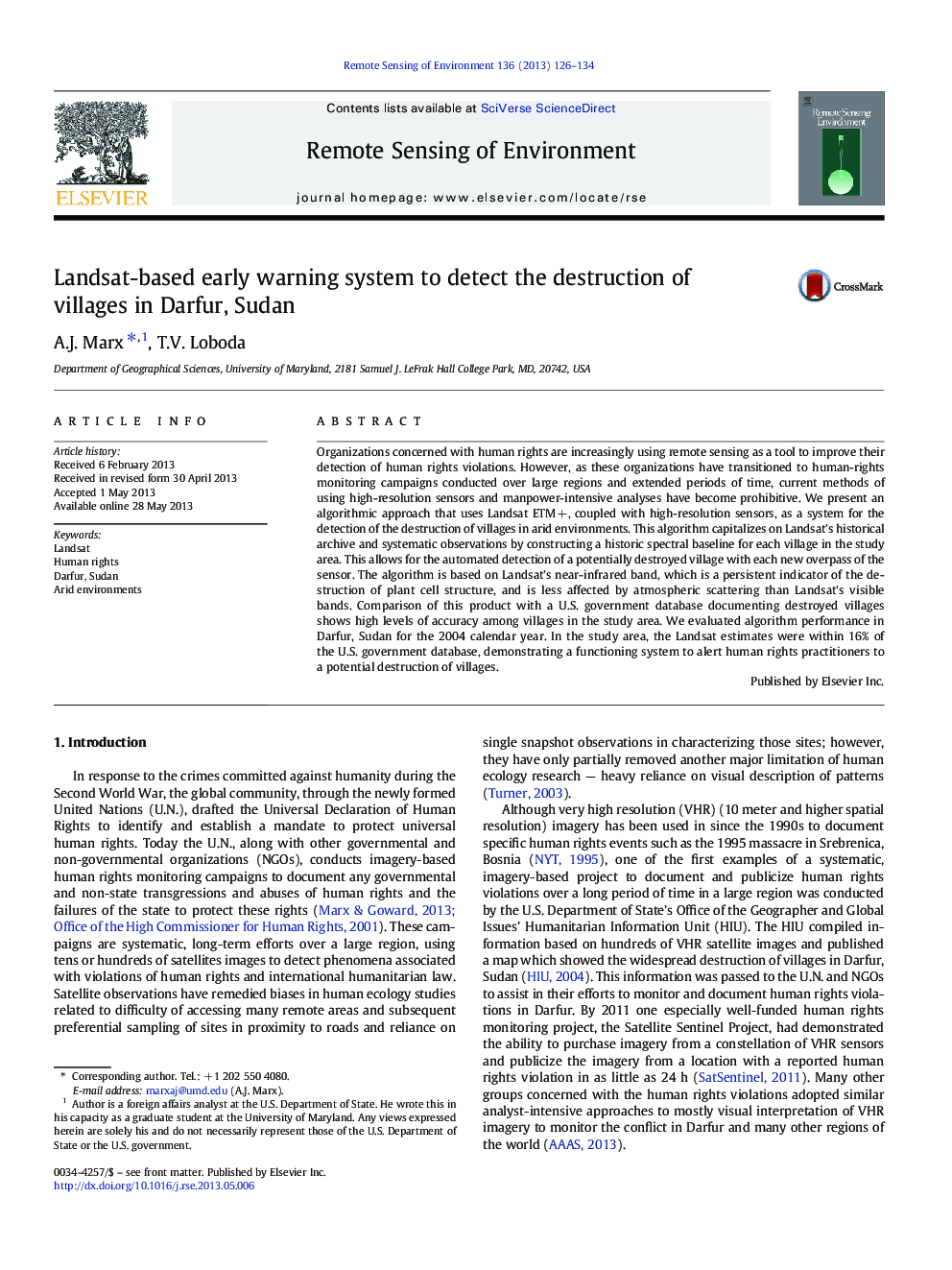| Article ID | Journal | Published Year | Pages | File Type |
|---|---|---|---|---|
| 6347394 | Remote Sensing of Environment | 2013 | 9 Pages |
Abstract
Organizations concerned with human rights are increasingly using remote sensing as a tool to improve their detection of human rights violations. However, as these organizations have transitioned to human-rights monitoring campaigns conducted over large regions and extended periods of time, current methods of using high-resolution sensors and manpower-intensive analyses have become prohibitive. We present an algorithmic approach that uses Landsat ETMÂ +, coupled with high-resolution sensors, as a system for the detection of the destruction of villages in arid environments. This algorithm capitalizes on Landsat's historical archive and systematic observations by constructing a historic spectral baseline for each village in the study area. This allows for the automated detection of a potentially destroyed village with each new overpass of the sensor. The algorithm is based on Landsat's near-infrared band, which is a persistent indicator of the destruction of plant cell structure, and is less affected by atmospheric scattering than Landsat's visible bands. Comparison of this product with a U.S. government database documenting destroyed villages shows high levels of accuracy among villages in the study area. We evaluated algorithm performance in Darfur, Sudan for the 2004 calendar year. In the study area, the Landsat estimates were within 16% of the U.S. government database, demonstrating a functioning system to alert human rights practitioners to a potential destruction of villages.
Keywords
Related Topics
Physical Sciences and Engineering
Earth and Planetary Sciences
Computers in Earth Sciences
Authors
A.J. Marx, T.V. Loboda,
